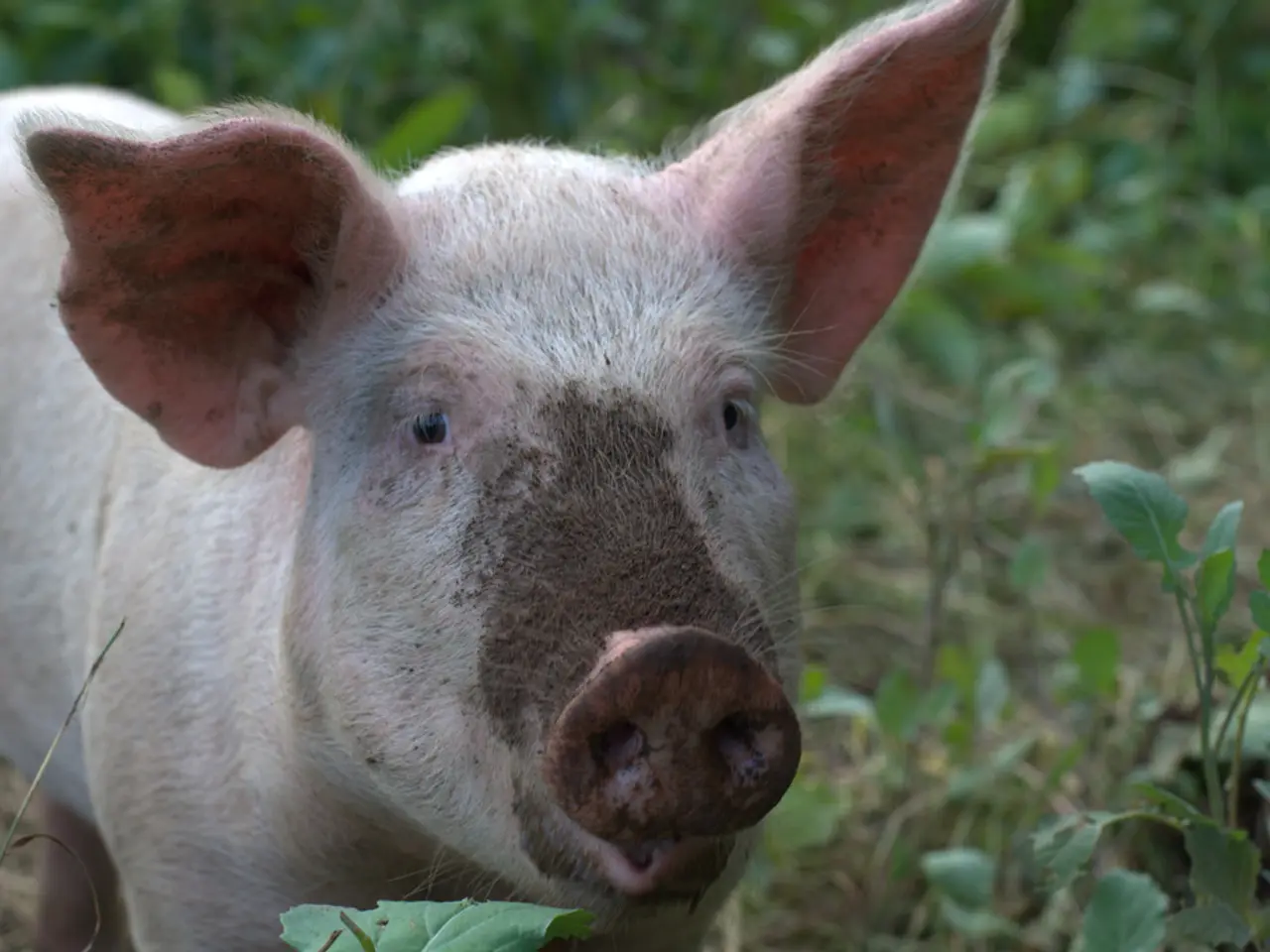MRSA Prevalence Among Swine and Farmers
In recent studies, Methicillin-resistant Staphylococcus aureus (MRSA) strain ST398 has been detected in pig farms across the states of Iowa and Illinois. This zoonotic pathogen, primarily spreading from pigs to humans through direct contact with colonized pigs and inhalation of contaminated dust in farming or slaughterhouse environments, has been a growing concern.
Researchers, such as Tara Smith from the University of Iowa, have been investigating the scale of the MRSA epidemic in pigs and the role that agricultural antibiotics have played in its spread. Preliminary findings suggest that piglets, particularly those under the age of 12 weeks, have the highest rates of infection. In fact, every single piglet in this age group was found to harbour MRSA colonies.
The Dutch strain of MRSA (ST398) was first discovered in 2002 and has since become a significant issue, accounting for over one in five human infections. This strain has been found in various countries, including France, Singapore, Denmark, and the US, suggesting it may have stowed away in pigs during international trade.
In the Netherlands, ST398 has been detected in a quarter of local pigs, while in Ontario, Canada, it has been found in a fifth of pig farmers. The US, as the largest importer of Canadian pork, could potentially have farms contaminated by swine brought in from Canada, but further studies are needed to confirm this.
To combat the spread of MRSA ST398, several control measures have been proposed. These include implementing integrated surveillance of the pork supply chain, enhancing biosecurity and hygiene practices on farms, rational use of antibiotics in livestock, routine screening of farm workers, and awareness and education programs for stakeholders in the pork industry.
While the food chain is not entirely safe, with ST398 detected at low levels in some meat samples, there's no need for the general population to panic over ham and bacon. However, the risks could be higher for people who handle meat directly or those with weakened immune systems.
In conclusion, the detection of MRSA ST398 in pig farms in Iowa and Illinois highlights the importance of continued research and monitoring to understand the scale of the epidemic and to develop effective control measures. By implementing these strategies, we can reduce transmission from pigs to humans and limit the spread of MRSA ST398 within the food production chain and occupational settings.
The study of MRSA ST398's impact on various species, particularly pigs, is a growing concern within the community of science. Medical-conditions and chronic-diseases like chronic-kidney-disease might be influenced by this zoonotic pathogen, as it has been found to infect humans, especially those with weakened immune systems.
Health-and-wellness advocates emphasize the importance of maintaining a balanced lifestyle to strengthen immunity, which could be beneficial in preventing the spread of MRSA ST398. This may include practicing fitness-and-exercise regularly and making informed choices about food-and-drink.
Pets, particularly those living on farms or owned by farmers, could also serve as carriers of MRSA ST398. Vigilance in maintaining hygiene, both on farms and in homes, is crucial to prevent transmission between pets, farm animals, and humans.
To combat the emerging issue of MRSA ST398, it's essential to implement strategies such as integrated surveillance of the pork supply chain, enhancing biosecurity and hygiene practices, and limiting the use of antibiotics in livestock. These measures, backed by awareness and education programs, could play a significant role in curbing the spread of this pathogen.
Lastly, understanding the intricacies of the epidemic, developing effective control measures, and continually monitoring the situation contribute significantly to the health-and-wellness of the overall community, including farmers, agricultural workers, and consumers.






